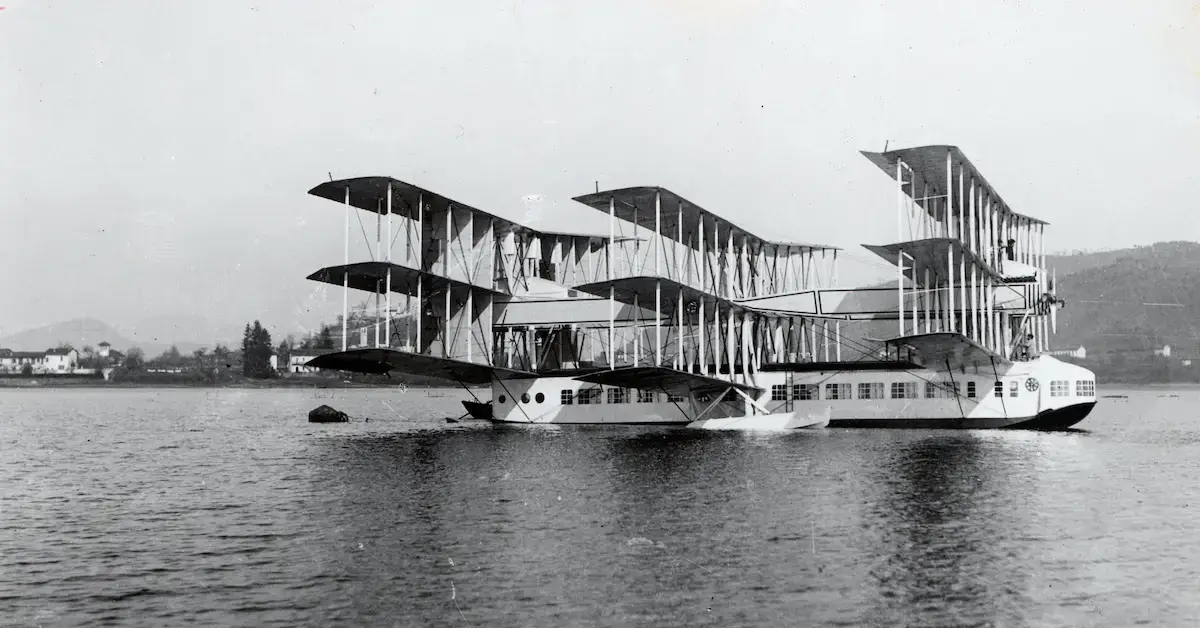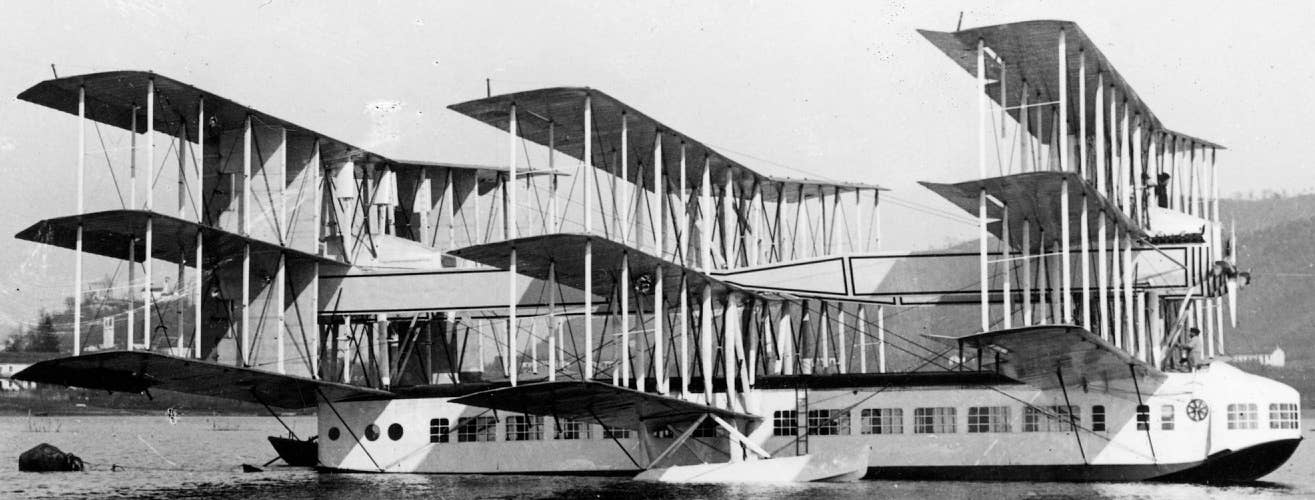
Those on this list of weirdest military aircraft might have the feel of science fiction, but we have it on good authority that every single one of them graced the skies – or at least attempted to get off the ground.
Here are 9 of the weirdest military aircraft that actually flew
1. Caprioni Ca.60

What the Caprioni Ca.60 lacked in actual flying power it made up for with an overabundance of wings and engines. Even though this aircraft only flew once to an attitude of 60 feet, it still served as a flying boat prototype for a 100-passenger trans-Atlantic plane. The Ca.60 had eight engines and nine wings. Talk about overkill.
2. Convair F2Y Sea Dart

This might look like a top of the line fancy jet ski, but it’s the world’s one and only supersonic seaplane. In the 40s, supersonic jets had a long takeoff roll from aircraft carriers to get airborne. So the Navy decided the best way to shorten the roll was to put skis on the jet. Unfortunately, the engines on the Sea Dart weren’t powerful enough to work well, and violent vibrations grounded the aircraft for good.
3. Curtiss-Wright VZ-7

We love this one for the sheer absurdity of it. It seems like someone decided all a pilot needed to fly was a seat and a set of controls. Enter the Curtiss-Wright. The Curtiss-Wright VX-7 was incredibly dangerous and unique, and “flying JEEP” was apparently easy to fly, it left the pilot open to enemy fire. Unfortunately, the Curtiss-Wright never met Army standards and was permanently grounded.
4. Goodyear Inflatoplane

As if the name “Inflatoplane” isn’t hilarious enough, this aircraft proves that maybe Goodyear should stick to making tires. This experimental project tried to make an all-fabric inflatable aircraft that could be used as a rescue plan. The idea was that the Inflatoplane would be dropped down to pilots behind enemy lines. But the entire project was quickly canceled by the Army because there wasn’t a valid military use for an aircraft that could be “brought down by a bow and arrow.” Nice try, Goodyear.
5. Hiller X-18

Often considered the prototype for the Osprey, the Hiller X-18 was the first test-bed for tilt-wing and VSTOL technology. However, the X-18 didn’t handle wind gusts very well, and since the engines weren’t cross-linked, every engine failure resulted in a crash.
6. Lockheed XFV

Ah, Lockheed, you never fail to disappoint. The XFV was Lockheed’s attempt at combining an airplane and a helicopter, and the results were … interesting, to say the least. While the XFV did manage to transition from horizontal to vertical flight, it lacked the speed to really “take off” in the aviation world – not to mention the right kind of pilots who could fly it.
7. McDonnell XF-85 Goblin

Talk about ambitions. The idea behind the McDonnel XF-85 Goblin was simple enough on paper. The plan was for the XF-85 to be carried in the belly of a Convair B-36 bomber and launched mid-flight to protect the bombers from enemies. Then, it would re-dock with the bomber using a simple retractable nose-hook. Too bad this was all so much easier said than done. On its first test flight, the project was scrapped because it was almost impossible to complete the re-docking procedure.
8. North American F-82 Twin Mustang

The other name for the North American F-82 Twin Mustang was the “Double P-51” because it had two cockpits. This aircraft was designed as a long escort fighter for WWII, but the war ended before it got off the ground.
9. Northrup Tacit Blue

If the sight of the Northrup brings to mind old-school box race cars, you’re not alone. Most people think of a pine box racer competition when they see the Northrup Tacit Blue because of its angular lines and low-to-the-ground profile. In actuality, it was a stealth test-bed flown in the early 1980s. The aircraft included a quadruple-redundant fly-by-wire system to help keep it airborne.
These nine aircraft experiments prove that just because something can be successfully created on paper doesn’t mean it’s possible to leave the ground. Hats off to all the designers for their ingenuity and the pilots who were willing to give these aircraft a chance.
